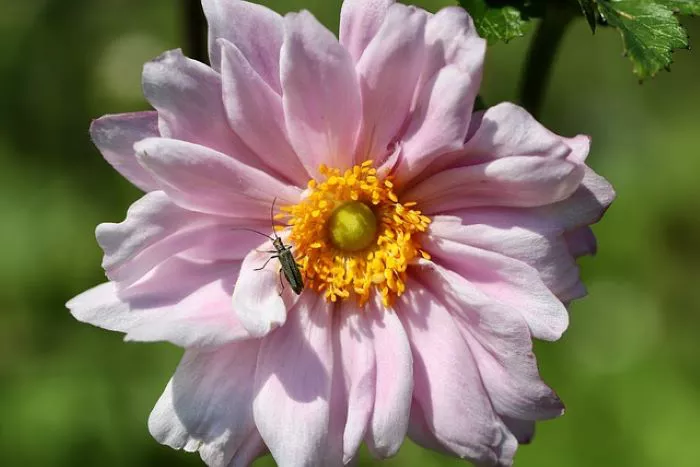Snails can be a significant pest in gardens, causing damage to a variety of plants and flowers. These mollusks are known for their slow movement and voracious appetite, often leaving a trail of destruction in their wake. To protect your garden, it is important to understand which flowers are less appealing to snails. This article will explore flowers that snails tend to avoid, along with strategies for managing these pests naturally.
Understanding Snail Behavior
Snails are primarily herbivores, feeding on a wide range of plants. They are attracted to soft, tender leaves and juicy stems. However, certain characteristics in flowers can deter snails. Flowers with strong scents, rough textures, or bitter tastes are generally less appealing to these pests. Understanding these preferences can help gardeners choose plants that are less likely to attract snails.
Flowers That Snails Typically Avoid
Several flowers are known to be unappealing to snails. Here are some of the most effective options for creating a snail-resistant garden:
Lavender: Lavender is well-known for its fragrant aroma. The strong scent of lavender is often off-putting to snails. Additionally, its woody stems and leaves make it less palatable. Planting lavender can help create a barrier against snails while adding beauty to your garden.
Marigolds: Marigolds are not only vibrant and cheerful but also serve as a natural deterrent for snails. Their strong scent and the texture of their leaves make them less appealing. Marigolds can be planted alongside other flowers to protect them from snail damage.
Rosemary: This aromatic herb is another excellent choice for keeping snails at bay. The strong scent of rosemary can repel snails, and its tough, needle-like leaves are not attractive to them. Rosemary can be used in cooking as well, making it a dual-purpose plant for your garden.
Sage: Similar to rosemary, sage has a strong aroma that snails dislike. Its fuzzy leaves and robust texture make it an unappetizing option for these pests. Sage can thrive in various garden conditions, making it a versatile choice.
Thyme: Thyme is a low-growing herb with a strong scent that snails tend to avoid. Its dense foliage can create a barrier that makes it harder for snails to access other plants. Thyme is also drought-resistant, adding to its appeal as a garden choice.
Fennel: Fennel has a distinct aroma that many pests find unappealing. Its tall, feathery leaves can deter snails while attracting beneficial insects like butterflies. Fennel can also be harvested for culinary uses, making it a practical addition to the garden.
Snapdragons: These vibrant flowers have a unique structure that snails find difficult to navigate. The leaves of snapdragons are not particularly appealing to snails, making them a good choice for a snail-resistant garden.
Geraniums: Certain types of geraniums have a strong scent that repels snails. Their thick leaves and stems are less likely to be eaten, making them a solid option for protecting other plants.
Hellebores: These perennial flowers are known for their tough leaves and bitter taste. Snails tend to avoid hellebores, making them a great option for gardens prone to snail infestations.
Foxgloves: Foxgloves are not only beautiful but also contain compounds that are toxic to snails. Their tall spikes of flowers can deter snails and add height and interest to your garden.
Creating a Snail-Resistant Garden
In addition to planting flowers that snails dislike, there are several strategies you can implement to create a snail-resistant garden:
Maintain Healthy Soil: Healthy plants are less susceptible to pest damage. Ensure your garden has well-aerated, nutrient-rich soil to promote strong growth. Healthy plants are better equipped to withstand snail pressure.
Use Barriers: Physical barriers can be effective in keeping snails away from your flowers. Copper tape, for example, can be placed around pots or garden beds. Snails receive a mild electric shock when they come into contact with copper, deterring them from crossing.
Encourage Natural Predators: Some animals, such as birds, toads, and certain beetles, feed on snails. Creating a habitat that attracts these natural predators can help keep snail populations in check. Providing water sources, shelter, and native plants can encourage these beneficial creatures.
Keep the Garden Clean: Snails thrive in damp, cluttered environments. Regularly remove debris, such as fallen leaves and plant matter, to reduce hiding places for snails. Keeping the garden tidy can help minimize snail populations.
Water Wisely: Snails are more active in moist conditions. Water your garden in the morning to allow the soil to dry out during the day. This can make the environment less hospitable for snails.
Handpicking: In smaller gardens, handpicking snails can be an effective control method. Check your plants regularly, especially in the evening when snails are most active. Remove any snails you find and relocate them away from your garden.
Conclusion
Snails can pose a challenge for gardeners, but choosing the right flowers can help deter these pests naturally. Flowers such as lavender, marigolds, rosemary, and sage are known to be unappealing to snails. By combining these plants with other strategies, such as maintaining healthy soil, using physical barriers, and encouraging natural predators, you can create a thriving garden that is less susceptible to snail damage.
By understanding snail behavior and implementing these methods, you can enjoy a beautiful, flourishing garden while minimizing the impact of these garden pests. Embracing natural solutions not only protects your plants but also contributes to a healthier ecosystem.


